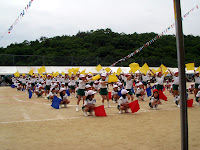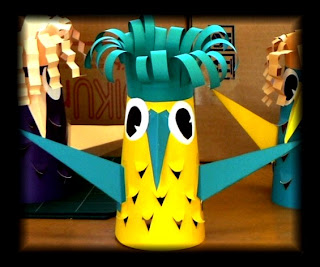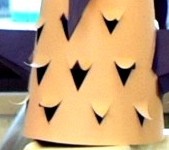 |
| very narrow backyard |
There's this
Loquat tree in my backyard that's been sitting there for years.
I never paid it much attention except
that it served as a kind of screen between our house and the
neighbor's a scant three or four meters away. Unfortunately, it's the
back of the neighbor's house and looks rather like a small junk yard,
so the loquat tree served us well hiding the junk even though it
never seemed to produce any edible fruit. What piddling little
shriveled loquats did appear usually got eaten by bugs or birds or
just simply rotted on the tree.
 |
| ripe loquats |
In the past year or two, though, we
started to throw some fertilizer on the ground around the trunk of
the tree and lo and behold it produced quite a tidy amount of edible
loquats this year. Well, wot to do with loquats?
A Google search on the web came up
with lots of ideas for cooking with them so we tried a few of them
and they turned out to add some nice variety to our daily bread fare.
Thought I'd turn you on to a couple recipes should you happen to have
a loquat tree in your yard or can hit up a neighbor for a few. The
first one is a main dish using fresh tuna fish.
Pan-Seared Tuna over
Arugula with Loquat Salsa
 |
| zesting the lime |
| main ingredients for loquat salsa |
First
you make the salsa. For two cups use 1½ cups of loquats with seeds
and membrane removed and diced; ½ cup of diced red onion; 1 or 2
jalapeno peppers (depending on how hot you like it), finely chopped; zest and juice of 1 lime; 1 tsp.
salt; 1 tbs. honey. Combine all the ingredients in a bowl or jar and
chill in the refrigerator.
| Pan seared tuna with loquat salsa |
You
will need two 6oz. tuna steaks about an inch thick salted and
peppered on both sides; arugula leaves or any lettuce leaves will
do; balsamic vinegar. Preparation and cooking is simple. Place the
lettuce on a large plate. Heat a skillet until it is smoking then add
the tuna steaks and sear on both sides to about ¼ inch. The middle
will still be pink and just warmed. Move the tuna steaks to a plate
and let them rest while you sprinkle the arugula (or lettuce) with
balsamic vinegar. Slice the steaks into half inch slices and lay them
over the arugula. Then top the tuna steaks with the loquat salsa—the
more salsa the tastier.
Here
is the website where I found this recipe and others.
*******************************************
Fool's Gold?
| loquats and carrots |
| diced loquats added to curdled pudding |
We
also tried to concoct a desert using loquats and carrots with mixed
success. In a blender we put about a cup of loquats (seeded with
membranes removed) and about half that amount of sliced carrots;
200ml. heavy cream; 1 tsp. Lime juice; 2 or 3 tbs. Gum syrup; half a
dozen mint leaves. When blended we got a smooth pale orange to light beige pudding.
Unfortunately, we thought that it needed more loquat taste and added
two or three more loquats and blended it a little more. For some
reason, perhaps tipping the acid balance, the pudding curdled up, but
still tasted fine. At any rate, we put the curdled pudding into a
container and then added more diced loquats, folded them in,
covered the container and put into the refrigerator to chill.
When
ready for desert we spooned some of the pudding into small glasses
and garnished them with two halves of a seeded and de-membraned loquat, a loquat seed or two (for color not eating) and a
sprig or two of mint. Didn't look so hot, but tasted very good, a
little tart and not too sweet—just enough to complement the tartness
of the loquat and its rather subtle flavor. Would have been better if
the pudding hadn't curdled. But, tomorrow's another day.
| Fool's Gold |













